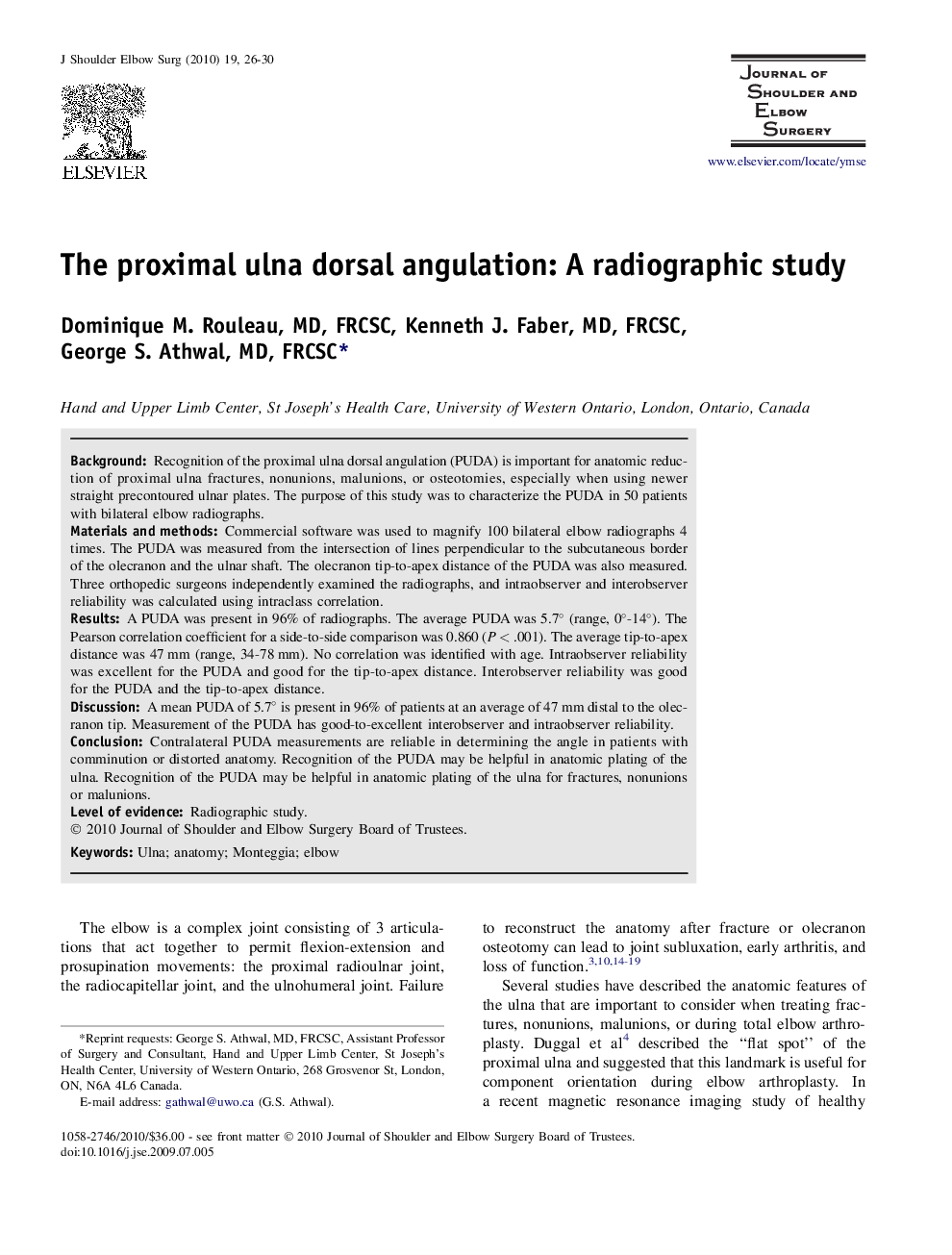| Article ID | Journal | Published Year | Pages | File Type |
|---|---|---|---|---|
| 4076168 | Journal of Shoulder and Elbow Surgery | 2010 | 5 Pages |
BackgroundRecognition of the proximal ulna dorsal angulation (PUDA) is important for anatomic reduction of proximal ulna fractures, nonunions, malunions, or osteotomies, especially when using newer straight precontoured ulnar plates. The purpose of this study was to characterize the PUDA in 50 patients with bilateral elbow radiographs.Materials and methodsCommercial software was used to magnify 100 bilateral elbow radiographs 4 times. The PUDA was measured from the intersection of lines perpendicular to the subcutaneous border of the olecranon and the ulnar shaft. The olecranon tip-to-apex distance of the PUDA was also measured. Three orthopedic surgeons independently examined the radiographs, and intraobserver and interobserver reliability was calculated using intraclass correlation.ResultsA PUDA was present in 96% of radiographs. The average PUDA was 5.7° (range, 0°-14°). The Pearson correlation coefficient for a side-to-side comparison was 0.860 (P < .001). The average tip-to-apex distance was 47 mm (range, 34-78 mm). No correlation was identified with age. Intraobserver reliability was excellent for the PUDA and good for the tip-to-apex distance. Interobserver reliability was good for the PUDA and the tip-to-apex distance.DiscussionA mean PUDA of 5.7° is present in 96% of patients at an average of 47 mm distal to the olecranon tip. Measurement of the PUDA has good-to-excellent interobserver and intraobserver reliability.ConclusionContralateral PUDA measurements are reliable in determining the angle in patients with comminution or distorted anatomy. Recognition of the PUDA may be helpful in anatomic plating of the ulna. Recognition of the PUDA may be helpful in anatomic plating of the ulna for fractures, nonunions or malunions.Level of evidenceRadiographic study.
